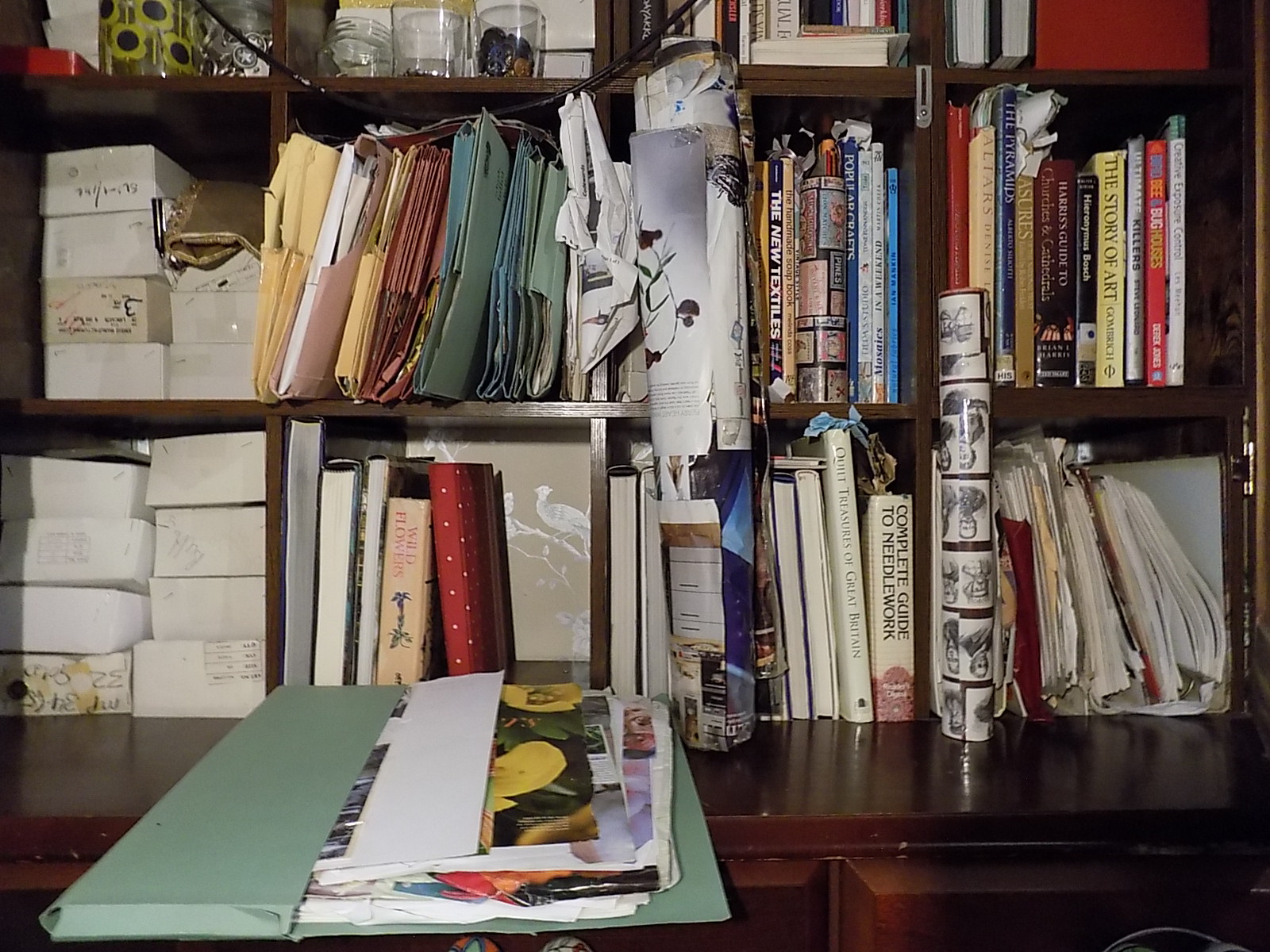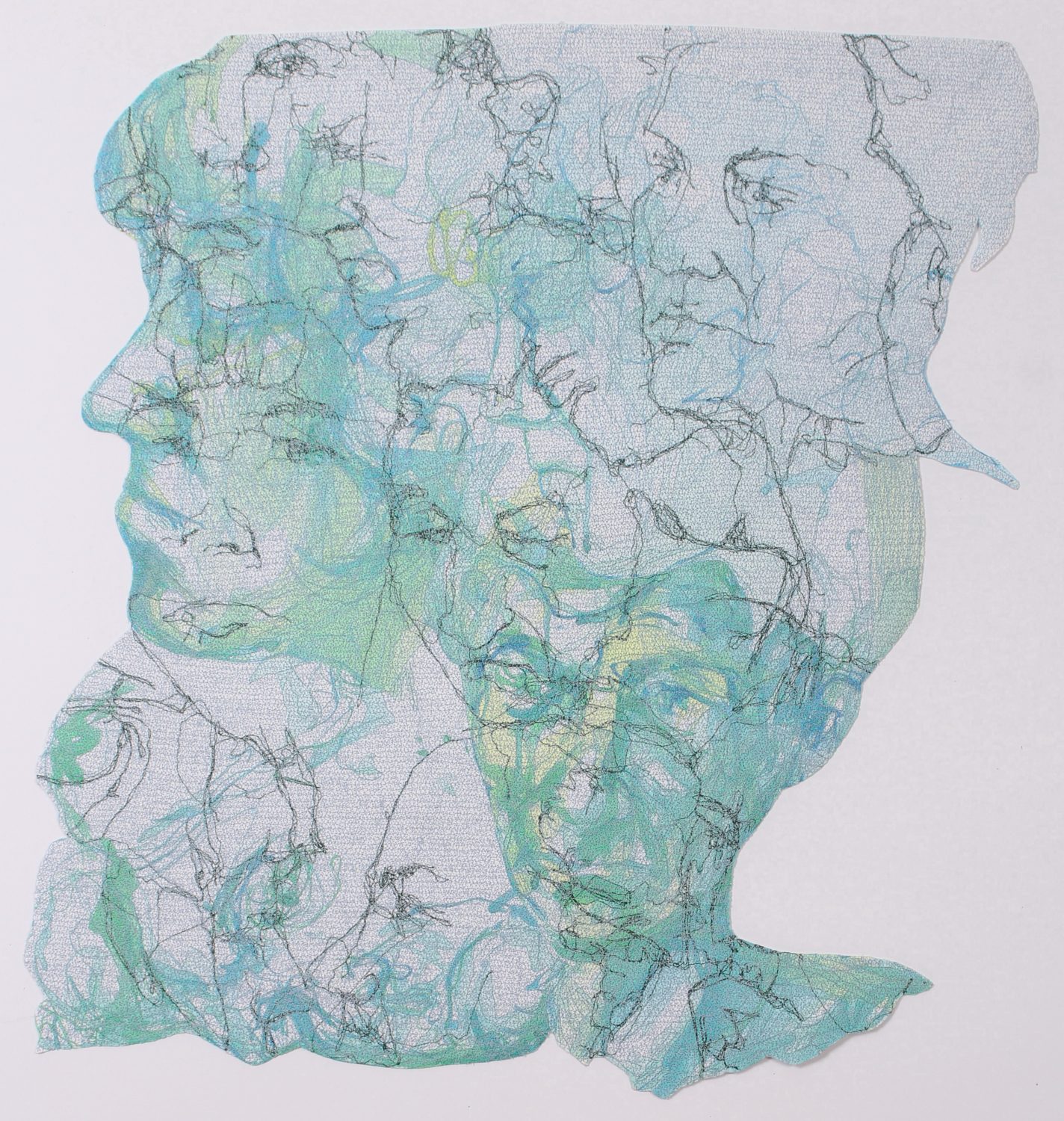Welcome to Beneath The Folds, where Christine Cunningham explores the creativity of textile art, from inspiration to technique.
Creating a textured landscape to represent skin in textile art can be easily achieved by layering a variety of materials to create a contoured surface within a chosen colour palette. Contrasting dense blocks of colour with layers of light reflective surfaces creates depth as light travels over the surface throughout the day. Fabrics offer a huge variety in texture, but other materials can be very effective.
Let us explore using everyday materials (paper, rubber and foam, leather, plastics and bubble wrap), natural textures (human and animal hair), synthetic fur and animal skin (shedded snakeskin carcasses).
Using Paper as Skin in Textile Art
Paper, tissue paper and cardboard are standard packaging providing a regular supply of texture, pattern and sheen. I love brown paper, conjuring up little packages tied with hessian string, the essence of a bygone era.
Patterns cut into card produce a concertina effect and are very effective in layering with colour underneath, producing depth within a design.
Fine tissue papers have a beautiful sheen and can be easily manipulated to produce a range of effects. Colours range from white through to light browns and is effective in producing a range of skin tones. Quality and thickness vary according to purpose.

Using Rubber and Foam
Rubber and foam padding is a fabulous material because it is pliable, can be easily cut and sculpted to create 3D forms, and the surfaces can be eroded for detailed contouring.
Old furniture (sofas, chairs and footstools) can be recycled to produce aged materials offering historical reference and their composite materials really are a rich surface to be celebrated.

Using Leather as Skin
My set of old suitcases are ready to be recycled because the zips no longer function. They have a beautiful scaly alligator pattern and are naturally light reflective. Traditional suitcases usually come in a strong traditional colour palette of browns and blues. Vintage always ages well and any wear and tear, including stains, captures the excitement of adventure, voyaging on big ships to exotic lands.
Soft leather can be sewn into with a strong needle (and a thimble) to provide a good background material for textile creations. If you cannot cut with strong scissors, try using a fine hacksaw.

Making Skin in Textile Art with Plastics
Plastics offer a great variety in texture, transparency and light reflective qualities, from everyday packaging to purpose produced.
My old family camping tent from childhood offers up a thick, dense outer cream panel and a brown window which plays with light, creating depth between its patterned contouring.
A roll of bamboo for the garden was housed in a yellow plastic mesh with nylon string. Online deliveries are a constant source of plastic and paper packaging.

Using Bubble Wrap
Bubble wrap is a favourite of mine because it is so effective, having real depth within its surface. Don’t forget that skin in textile art isn’t always flat or smooth; I have used this design element to create an undulating 3D surface using sheep wool and wadding.
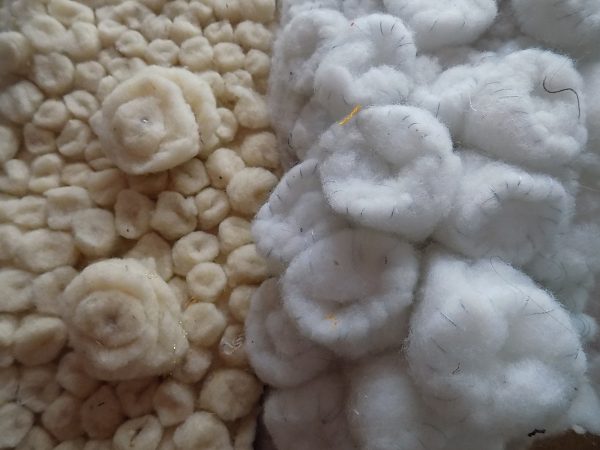
Using Hair In Textile Art
I have collections of my own hair (following chemotherapy treatment) and that of my parents (regular trims offering an ongoing collection), cat hair (short hair and ragdoll) and sheep wool from Yorkshire.
Synthetic wigs offer a contrast in texture and are light reflective.
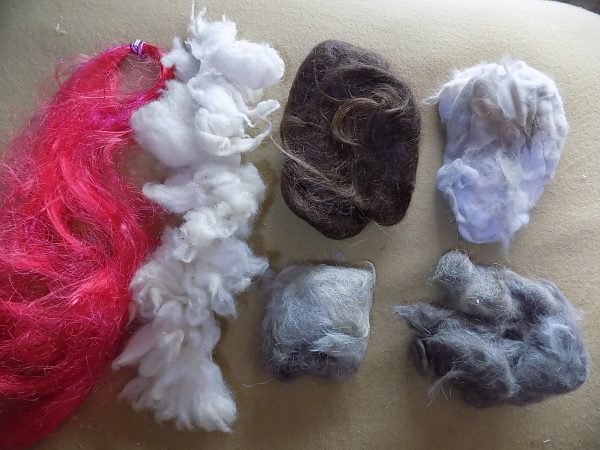
Hair is easily sculpted and provides a rich density and texture.

Here is an example from ‘V and A’ where the vagina cavity is lined in my own hair.
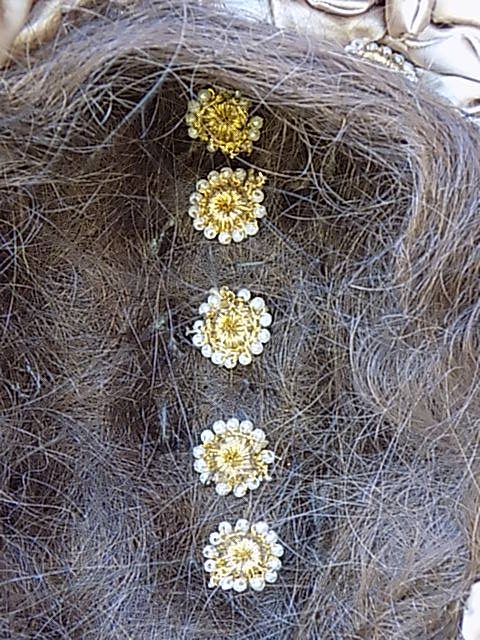
Using Synthetic Textures or Animal Fur
Fur offers a wealth of texture, colour and pattern, with prints inspired by animal markings. There is real depth between the flat background fabric and the raised napp, offering a rich surface of texture with varying degrees of density and movement depending on the length of fur and synthetic textures used.
There is an endless supply of winter fashions and soft furnishings in charity shops and car boot sales as we continue to churn out cheap seasonal goods for an eager mass market. As an artist, I feel it is my duty to do my bit to save the planet. Every little helps in diverting away from land fill.

Using Snake Carcasses in Textile Art
I collect the discarded snake skins of family pets which produce a beautiful carcass of delicate pattern and intricate detail. This serves as an abstract interpretation of dry, scaly skin, often associated with the ageing process. It has a beautiful sheen and is transparent.

Manufactured design often takes inspiration from nature. Look at the similarity between this paper packing and the snake’s skin.

As you can see, there are multiple ways to create skin in textile art, and you shouldn’t be afraid to experiment.
Everyday materials continue to excite me, and I am now more interested in using them than traditional fabrics in my textile creations. A combination of the two produces interesting effects; modern materials deserve to be explored and sculpted into a thing of beauty.
For more examples of my work visit my website where you will find further information on my recycling practice.




